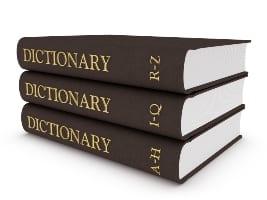Blog
Plain meaning trumps except for lexicography and disavowal
Federal Circuit reverses summary judgment of non-infringement (and claim construction) on three patents, and affirms summary judgment of non-infringement on a fourth.
GE Lighting Solutions, LLC v. AgiLight, Inc., ___ F.3d ___ (Fed. Cir. May 1, 2014) (Rader, MOORE, Reyna (dissent-in-part)) (N.D. Ohio: Gwin) (2 of 5 stars)
 Regarding the first two patents, the district court improperly imported limitations into the term "IDC connector." It was undisputed that the term has a broad plain meaning, and "the specification and prosecution history only compel departure from the plain meaning in two instances: lexicography and disavowal." Slip op. at 5. Neither circumstance was present here. Although the specifications disclosed only a single embodiment, it described it as merely the "depicted embodiment," did not describe any limitation "as the present invention, as essential, or as important," and do not "disparage other IDC connectors." Id. at 7. Moreover, claim differentiation supported a broad construction.
Regarding the first two patents, the district court improperly imported limitations into the term "IDC connector." It was undisputed that the term has a broad plain meaning, and "the specification and prosecution history only compel departure from the plain meaning in two instances: lexicography and disavowal." Slip op. at 5. Neither circumstance was present here. Although the specifications disclosed only a single embodiment, it described it as merely the "depicted embodiment," did not describe any limitation "as the present invention, as essential, or as important," and do not "disparage other IDC connectors." Id. at 7. Moreover, claim differentiation supported a broad construction.
Regarding the third patent, the disputed term was an "optical element having a substantially ellipsoidal inner profile and generally spherical outer profile." Although the parties had initially stipulated to a construction, a dispute arose later that the court had to resolve. "This is not an uncommon occurrence—parties in patent cases frequently stipulate to a construction or the court construes a term, only to have their dispute evolve to a point where they realize that a further construction is necessary.” Id. at 9. Ruling that the term required only a portion of the inner profile (not the entire profile) to be substantially ellipsoidal, the Federal Circuit concluded that the images of the accused products alone created a fact issue on infringement, even though the patentee relied on only argument about those images and did not have expert testimony: "Surely an expert is not required to create a fact question about whether something is generally spherical to preclude summary judgment." Id. at 13.
Regarding the fourth patent, the Federal Circuit held that the accused device—a concave lens—is not an "annular gasket" because it lacked the requisite "opening." The volume inside the lens was not an "opening" given the plain meaning of "gasket" and the patent's description of the gasket as ring-shaped.
Dissent-in-part: Judge Reyna would have held that the third patent required that the "entirety" of the inner lens be "substantially ellipsoidal." According to Judge Reyna, there was an inconsistency in the specification that should have been resolved against the patentee given the prosecution history and because the majority's construction would expand the claims to cover some absurd examples.
The opinions expressed are those of the authors on the date noted above and do not necessarily reflect the views of Fish & Richardson P.C., any other of its lawyers, its clients, or any of its or their respective affiliates. This post is for general information purposes only and is not intended to be and should not be taken as legal advice. No attorney-client relationship is formed.